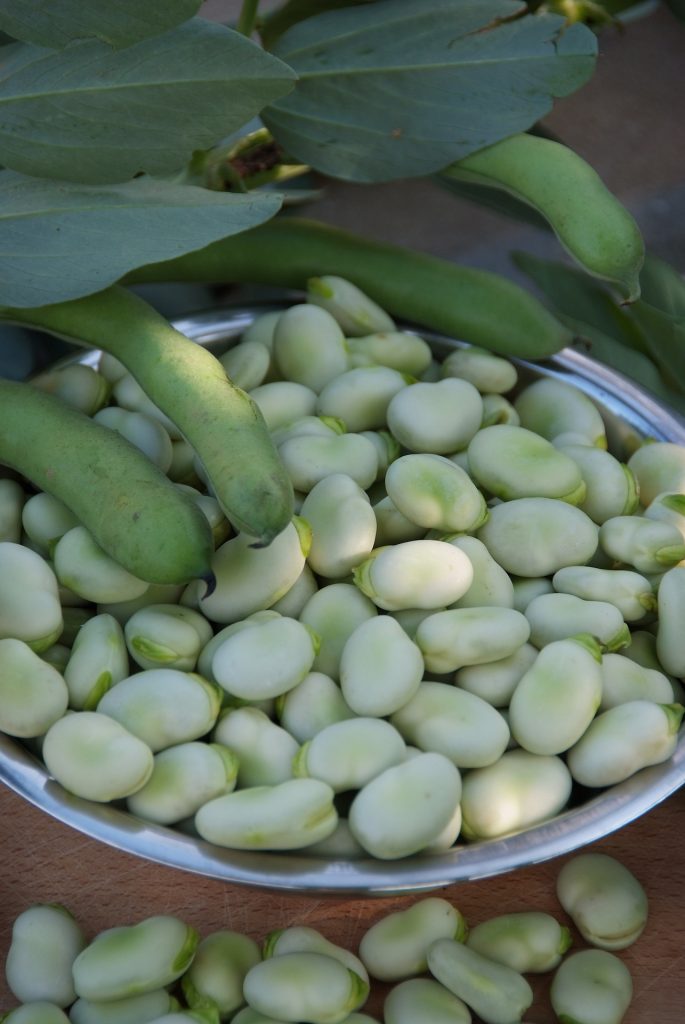Growing Broad Beans
Although broad beans are from the Fabaceae family, they look different and grow differently to their bean cousins.
They tend to be bushy, with square, hollow stems and without beany tendrils. They can have tall or dwarf growth habits and can produce long or short pods. Like all beans, they fix atmospheric nitrogen and so, are also useful as a green manure. Happily, fresh broad beans taste nothing like canned broad beans that many of us were subjected to as kids.
Best of all, they are hardy, easy to grow and happily survive in frosty climates. Plant them in April or May for an early spring harvest. Good varieties for this region include Early Long Pod, any of the Windsor varieties and Cole’s Dwarf Prolific, but there are many more to choose from.

Site and soil
Broad beans prefer a sunny well-drained position in the garden. Ideally, the soil should fertile, but should not have excess nitrogen or rich manure as this will promote leaf growth rather than flower (and bean) production and will make the plant more sensitive to frost and disease.
Planting
Direct planting into roughly prepared soil is most effective, with seeds sown at a depth of 5-10cm, with 15-20cm between plants and 70cm between rows.
Germination occurs 10-14 days after sowing, but will be slower the later you sow towards winter. Soaking seeds overnight in diluted liquid seaweed is said to speed up germination.
Water seeds well directly after sowing, then not until after germination, to prevent the seeds from rotting.
Cultivating

Broad beans will need to be staked or supported to stop the plant collapsing under the weight of the mature beans.
Flowers formed during frosty weather are unlikely to set pods. Once spring arrives, pinch out the tips of the plants to encourage pod set. Try to limit water stress as this will also affect pod set.
Harvesting
Pick the pods when the seeds are fully formed but not hard. If left too long on the plant, beans are likely to be dry and less tasty.
Dig in the roots and leaves after harvest to add nitrogen to the soil.
Problems
Broad beans are prone to fungal attack – brown spots on stems and leaves – particularly if planted too closely together or if planted in soils too rich in nutrients.
Towards the end of the crop, rust – producing powdery spots on the leaves – can become a problem. Plants with black tips may suffer from root rot, caused by poor drainage. Remove affected plants and re-sow.